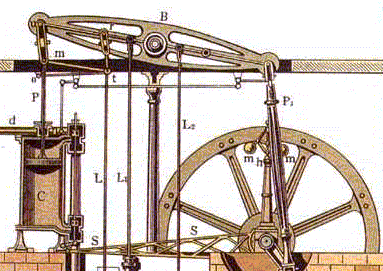|
________________________________________________________
________________________________________________________
Contents (1) Introduction: Capital and Time Introduction: Capital and Time The concept of capital is inextricably tied up with that of time. From Jacques Turgot (1769), we already have the notion of capital is a "fund", an advance that tides the producer over the interval of waiting until his own product is ready for use. The concept of "time" as being one of the determinants of production is, thus, quite an old one. Already, we find writers such as David Ricardo (1817: p.20-1) conceiving of time as being one of the costs of production.Even more explicitly, William Nassau Senior (1767) had referred to "abstinence" as being a "cost" of production which ought to be compensated for - thus justifying the rate of profit on capital. James Mill, McCulloch and John Stuart Mill followed suit. For the Neoclassicals, the concept of a time-dependent theory of capital came jointly with the birth of marginalist theory - namely, in the work of William Stanley Jevons (1871). However, it was in Eugen von Böhm-Bawerk's (1889) theory where the idea of capital as "time" itself gained greatest renown and the "Austrian" approach to capital was solidified. This was followed up by Knut Wicksell (1893, 1901) who, at the same time, attempted to clarify and extend Böhm-Bawerk's sometimes clumsy exposition. A few American authors, such as Thomas N. Carver (1893, 1903) and Frank A. Fetter (1902, 1914), while seduced by the Austrian concept, was still critical of Böhm-Bawerk's treatment. Naturally, John Bates Clark (1893, 1895), had a competing theory, was considerably more opposed to it. Since the turn of the century, the Austrian theory of capital has come under varying degrees of scrutiny, notably in the 1930s. On the positive side, Friedrich von Hayek (1928, 1929, 1931) and, to a simpler extent, Irving Fisher (1930), attempted to embed Austrian concepts in a more general theory of macrofluctuations - with Hayek significantly attempting to extend the original theory of capital to take account of disequilibrium situations. On the negative side, Frank H. Knight (1934, 1936) picked up where Clark left off and launched a sustained attack on the Austrian concept of "average period of production" which did much to reduce its appeal. The Keynesian Revolution short-circuited the rise of the capital-macroeconomic link that was being forged by Hayek and his contemporaries. With the exception of the work on the Keynesian investment function, the theory of capital was largely ignored in macroeconomics during this period (in America; the British followed the "Oxbridge" program which incorporated more serious treatments of capital). When capital theory re-emerged in the late 1950s and 1960s in the context of Neoclassical growth theory, it was the Clarkian rather than the Austrian conception that ruled the day. In more recent years, perhaps only Friedrich Lutz and Vera Lutz (1951), Ludwig Lachmann (1956) and, most significantly, John Hicks (1973) have attempted to restore some of the polish on the Austrian theory of capital. Hicks, in particular, attempted to work fixed capital into Austrian theory and to generalize it to flow input-flow output. The following account of the Austrian theory of capital has relied, to a good extent, on the excellent expositions by Friedrich A. Lutz (1956), Robert Dorfman (1959), Robert Kuenne (1971) and Syed Ahmad (1991). .
|
All rights reserved, Gonçalo L. Fonseca

